Pipestone National
monument
Pipestone was an early center of commerce,
for the whole continent, long before
Europeans arrived. This is not merely a
historical site; pipes are still being made
here, and stone is still being mined.
|
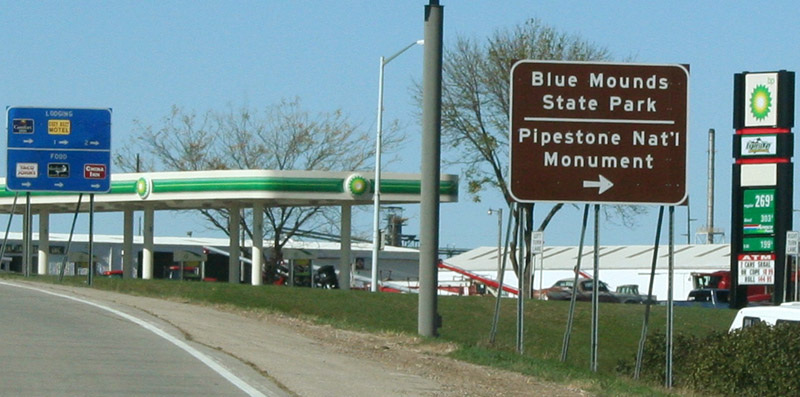 |
Left:
This is the place, nearly in South Dakota,
at the western edge of Minnesota. Pipestone
is twenty or thirty miles up a state road.
This is vacation country, and though the
signs all say this is Minnesota, it is a
much the west as it is the Midwest.
Below:
Pipestone National Monument. Though not yet
developed into a major tourist area, there
are campgrounds, shops, and the occasional
tourist trap. Still, it is a bit isolated,
for today's modern interstate bound tourist |
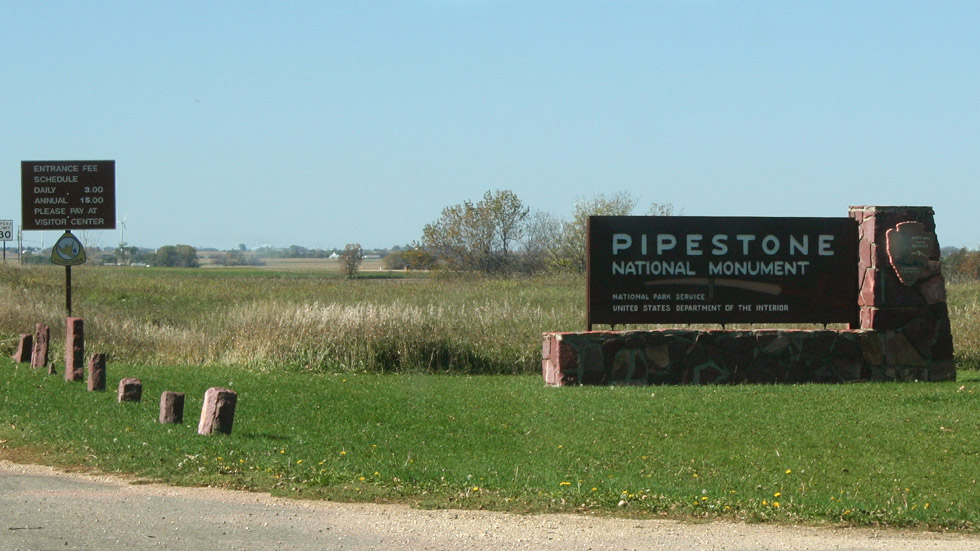 |
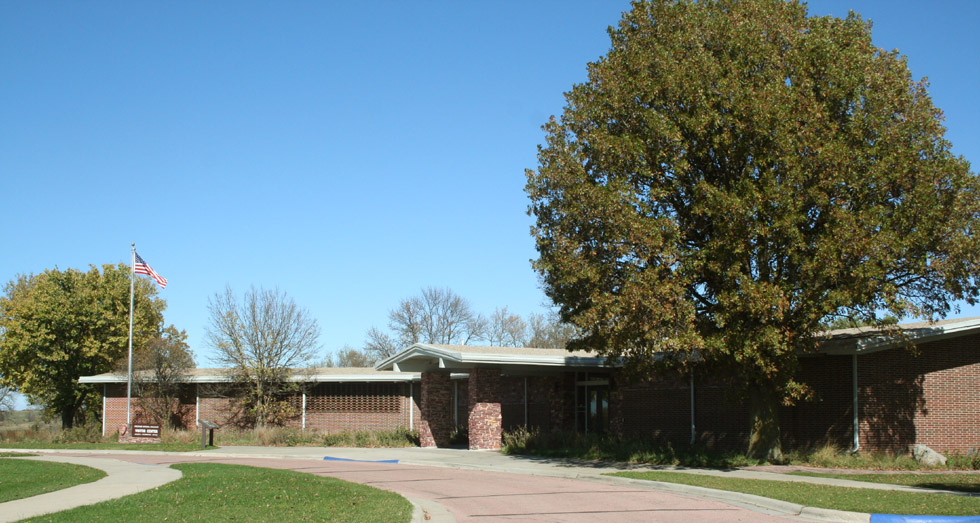 |
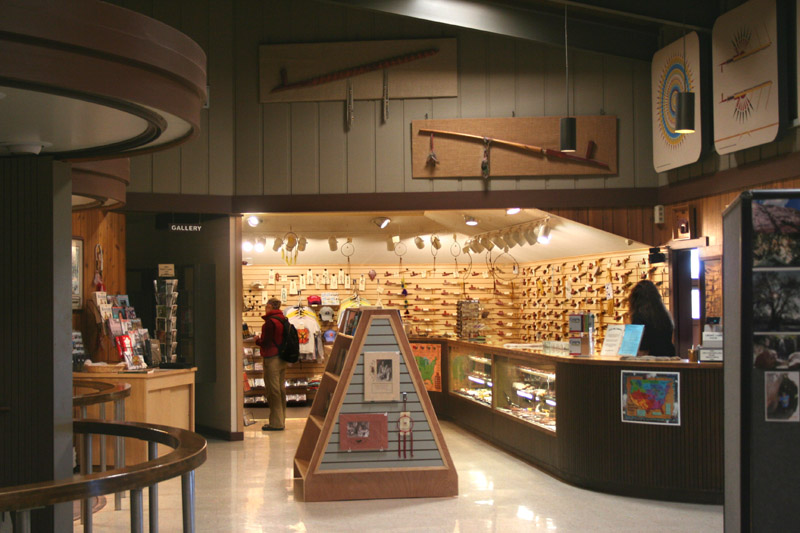 |
Above:
Park headquarters
Left:
If you want to get
yourself a genuine peace pipe, this would be
the place to do so. While the pipes are not
cheap, they are not as expensive as I had
thought. |
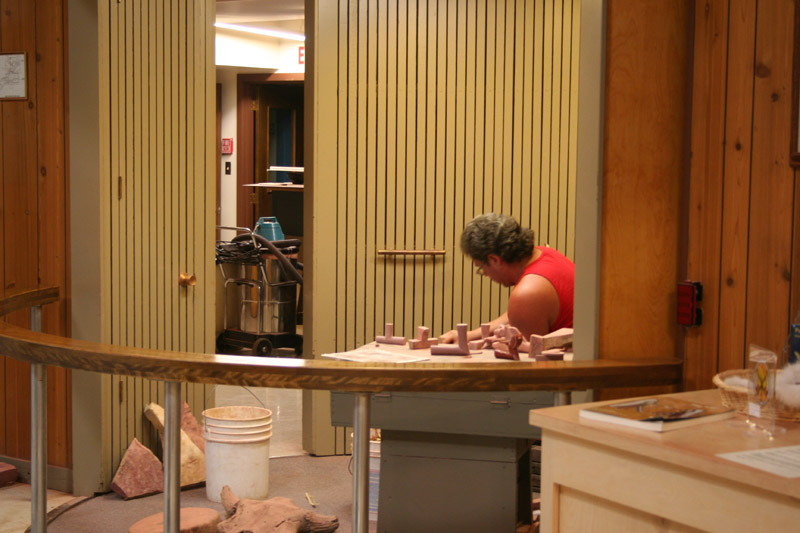 |
An Indian pipemaker,
working at his trade. These craftsmen quarry
their own stone, and then design, carve and
finish the pipes, mostly by hand. |
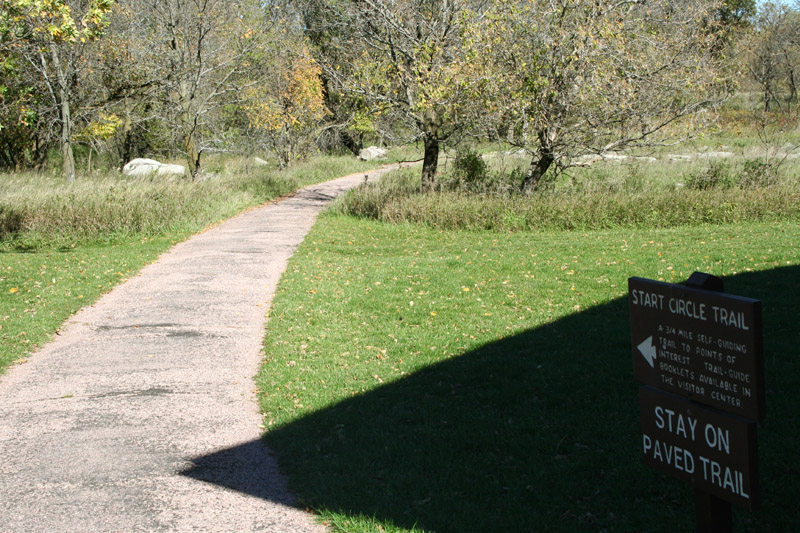 |
This is the start of the
Circle trail, a sort of a loop around the
traditional quarry areas. It is a pleasant
enough walk, through a mixture of woods, and
prairie, and gives the visitor a chance to
see old abandoned diggings, as well as sites
that are presently being worked. |
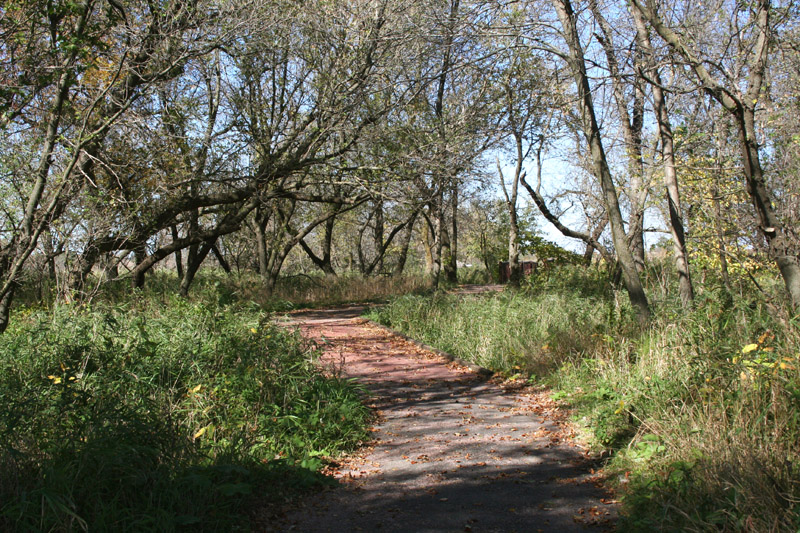 |
This path could be
anywhere in the Midwest, though such areas
are more common east of the Mississippi, and
is pretty representative of much of the area
out there. |
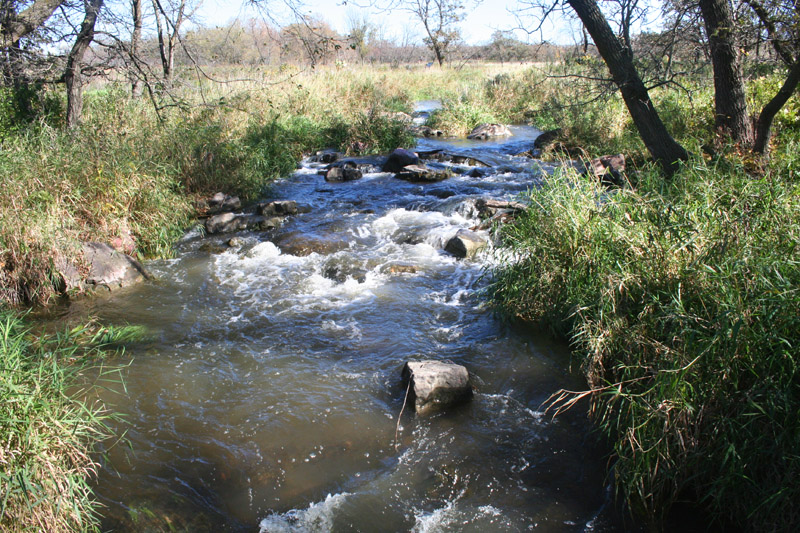 |
A stream meanders through
the woods and open fields. It even creates a
waterfall, over some of the exposed rock
outcroppings. |
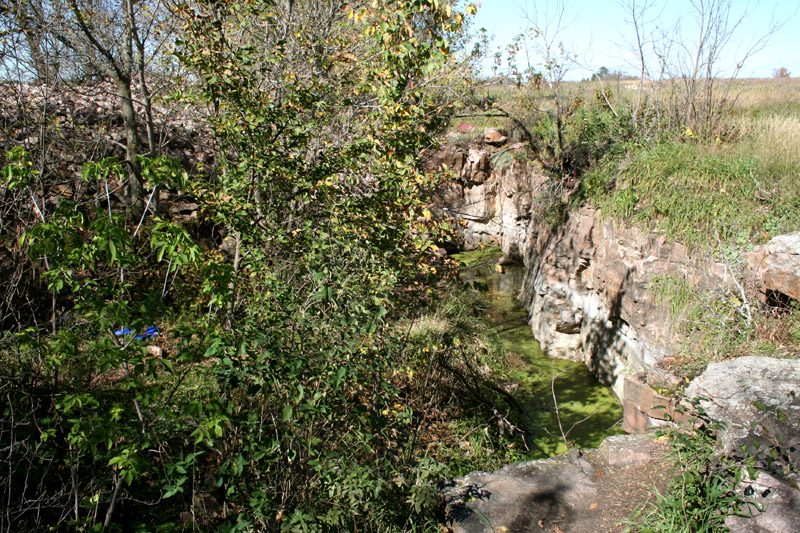 |
An old quarry, worked,
abandoned, and flooded for years, sits in
the midst of wood and prairie. |
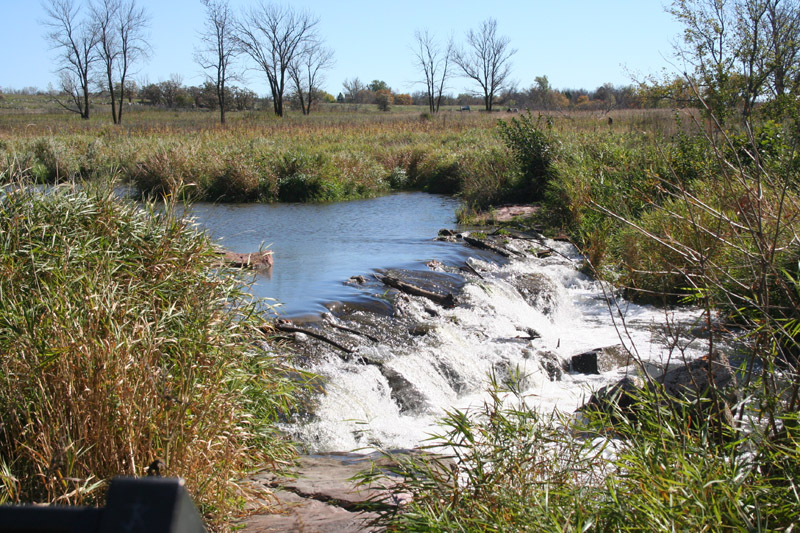 |
This area is largely
flat; but there are some high spots and low
lying areas. Water, as is it's habit, works
tirelessly to wear down the high areas, and
fill in the low. |
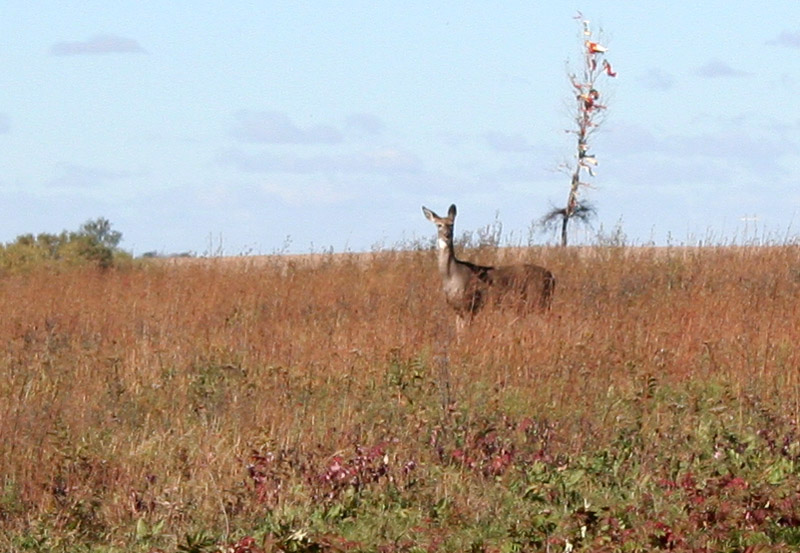 |
A deer watches, as I
tramp through the trails. The decorated tree
in the background is a part of an Indian
ritual. |
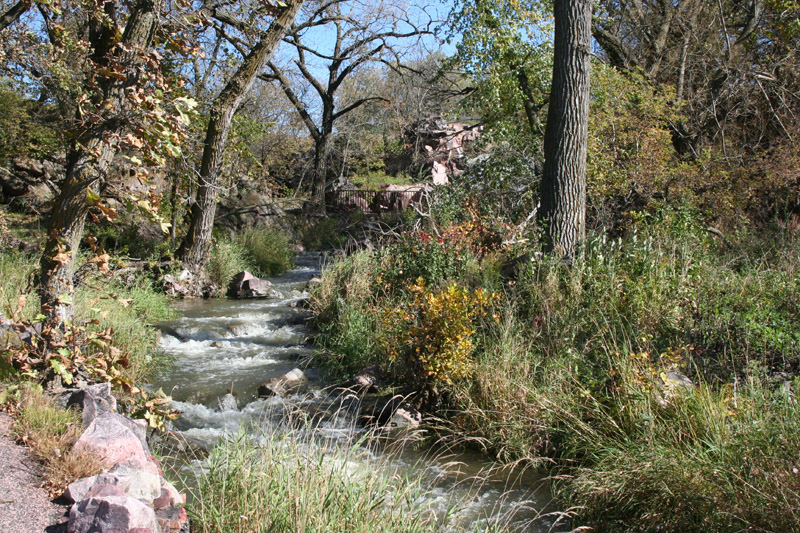 |
The river, along with the
extensive outcroppings on the eastern edge
of monument are great attractions; but the
real centerpiece of the area is the line of
quarries, both old and new. |
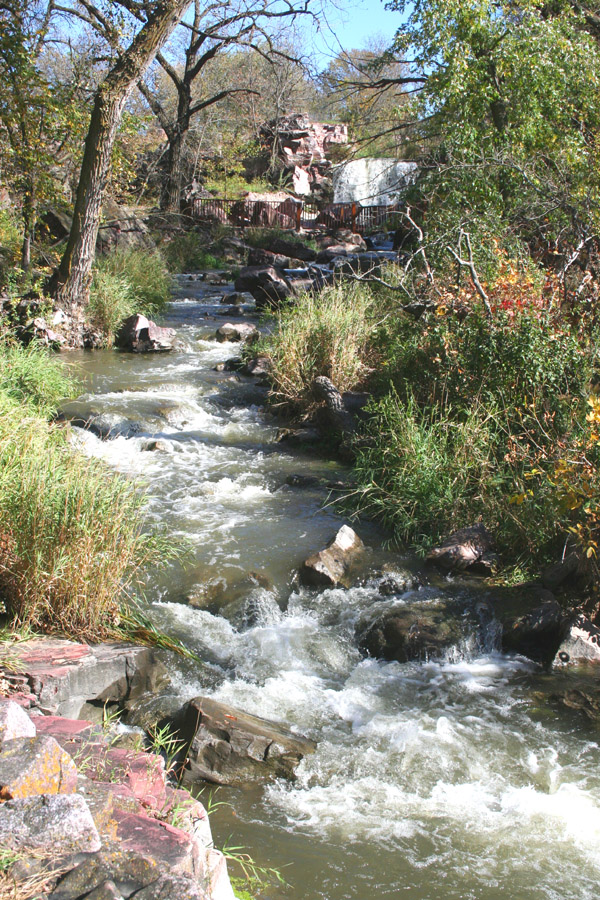 |
Another look up the
river, creek, or whatever it is. The rock
outcrops, and waterfall can be seen in the
background. |
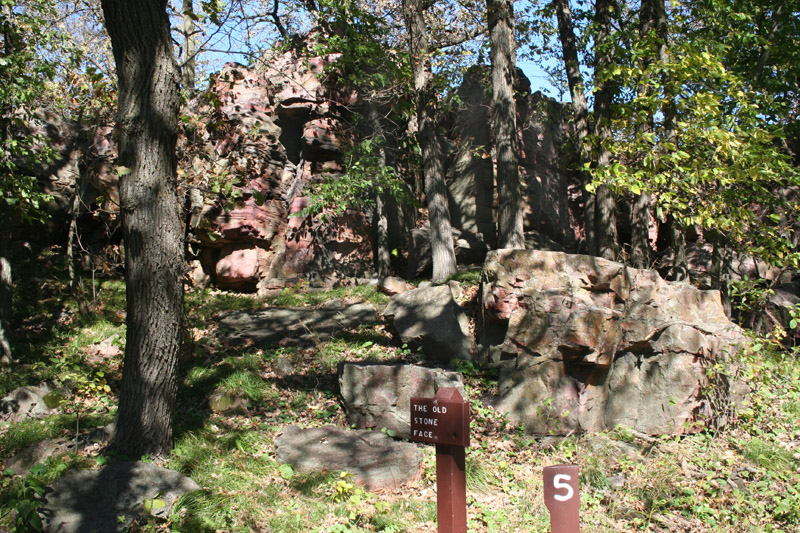 |
A large stone face,
imaginatively named "The Old Stone Face"
looks down on the visitor. |
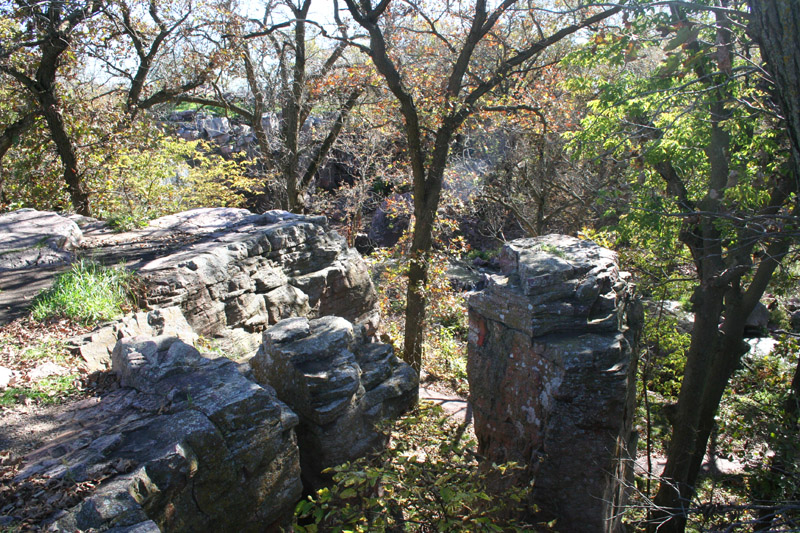 |
A look down, from the top
of the outcroppings. The are below dips, and
then slowly rises, to even out with the
surrounding prairie. This low lying area is
what exposed the rock and made quarrying
possible. |
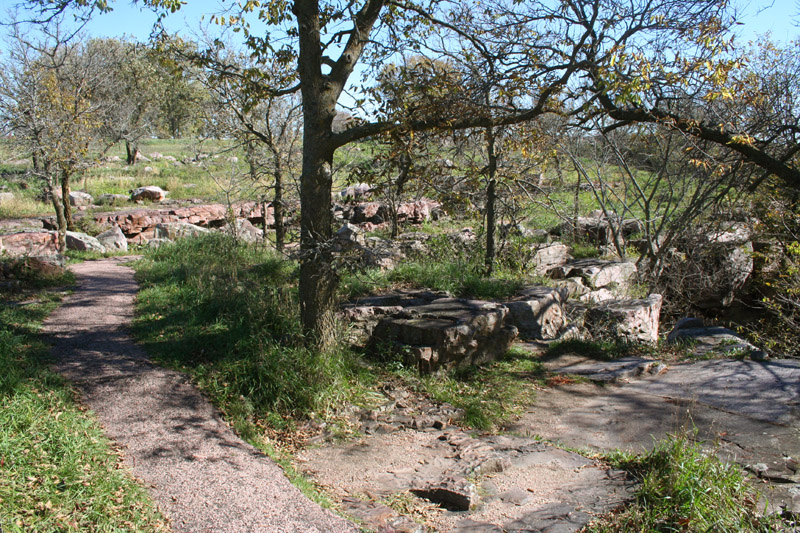 |
A look back at the higher
level of the prairie behind the waterfall. |
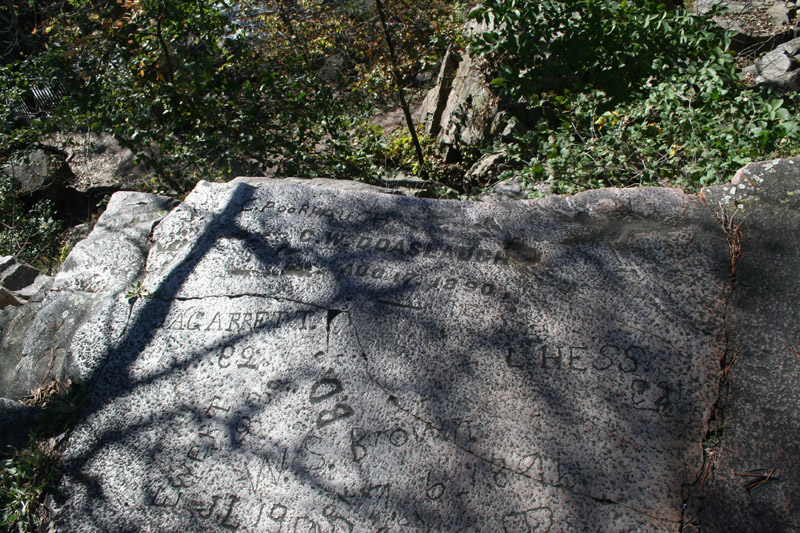 |
Left:
People have been coming here for hundreds of
years. Some of them left their signatures.
One generations graffiti is another
generations history.
Below:
A look out, from the top of the waterfall. |
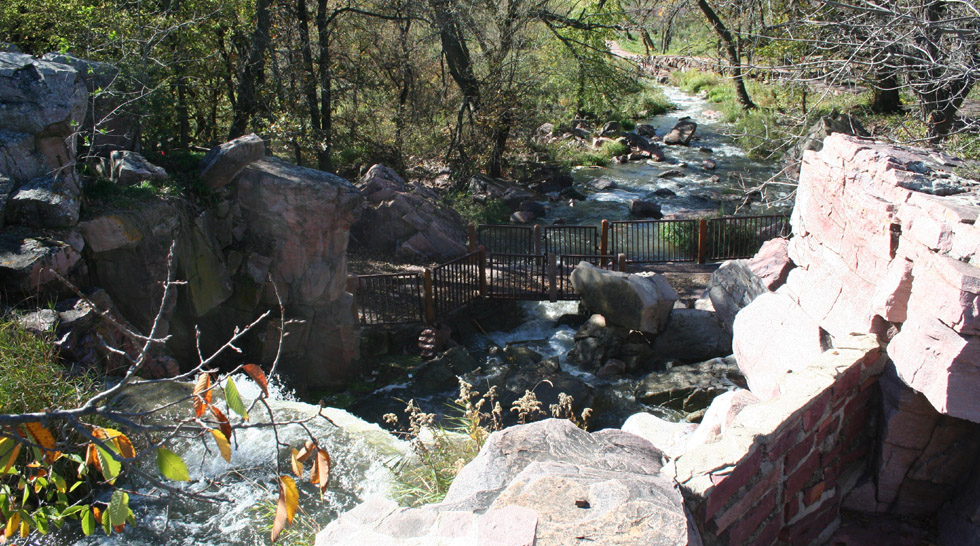 |
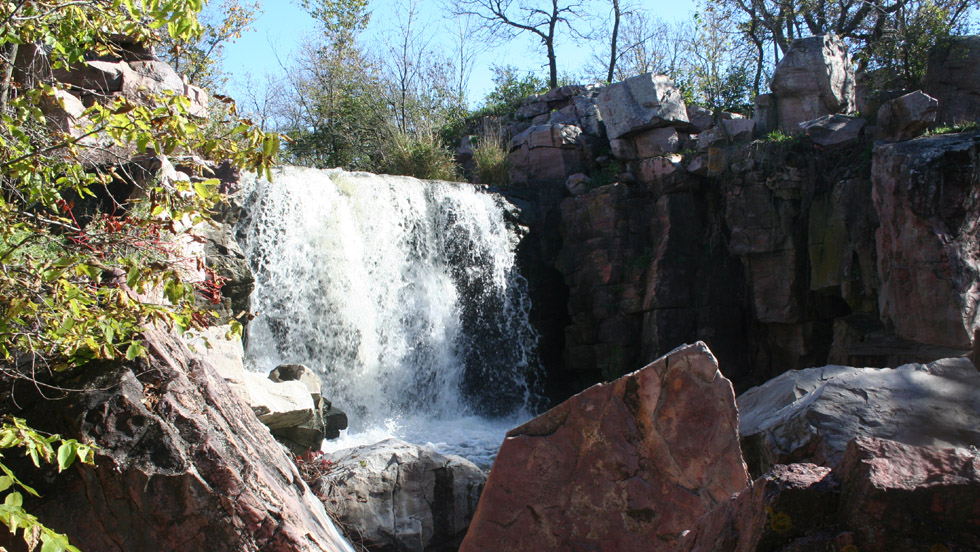 |
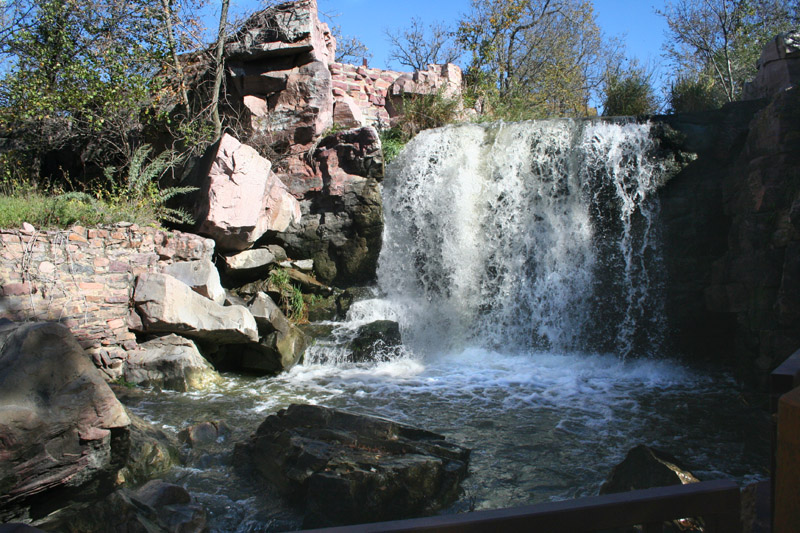 |
Left and Above:
The waterfall at the east end of the
monument.
Below:
The river, streaming out from the waterfall. |
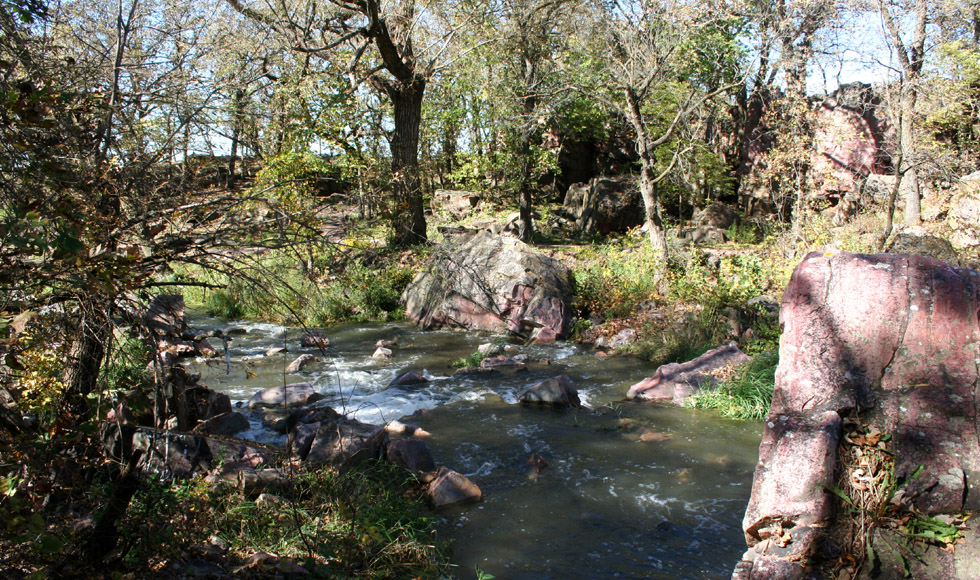 |
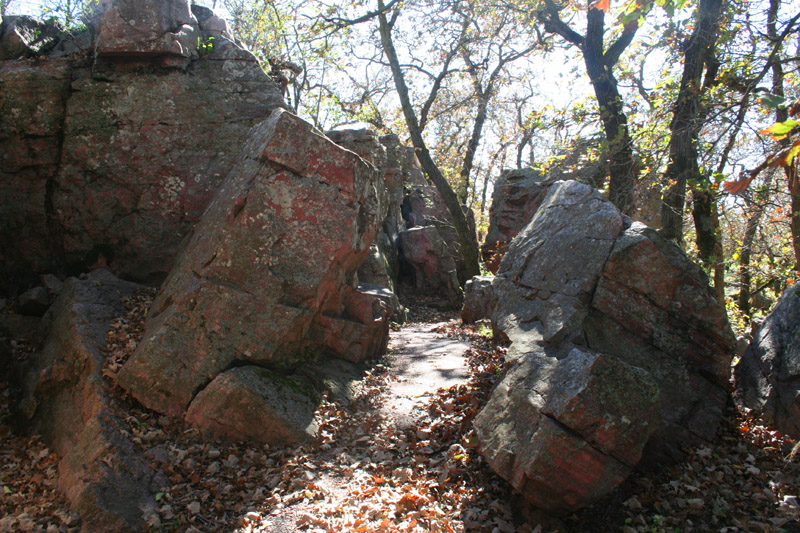 |
Rocks seem to abound
here, and it would appear, to the casual
visitor, that Pipestone is everywhere, and
not at all uncommon; but this is misleading.
The rock filling the park is quartzite, a
very hard and difficult to work stone. The
actual Pipestone is a layer only about eight
inches thick, which lies between layers of
this much harder rock. |
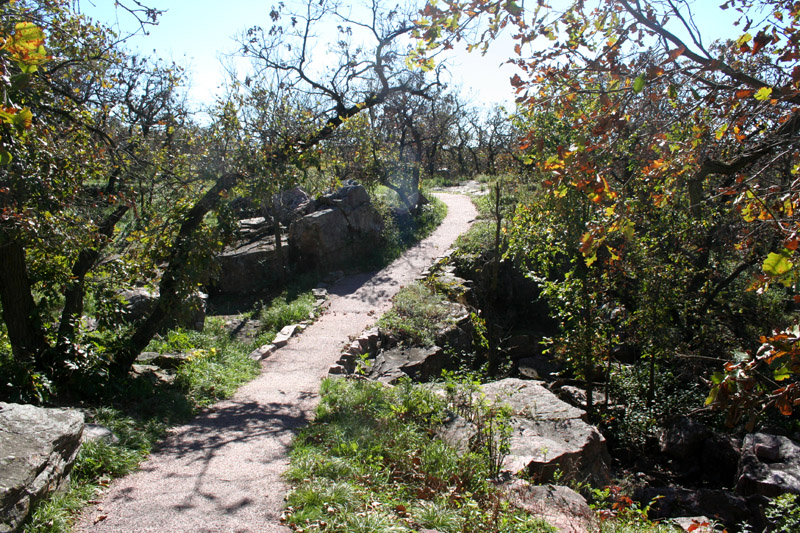 |
The pathway wandering
back out to the open fields on the western
and central sections of the monument. |
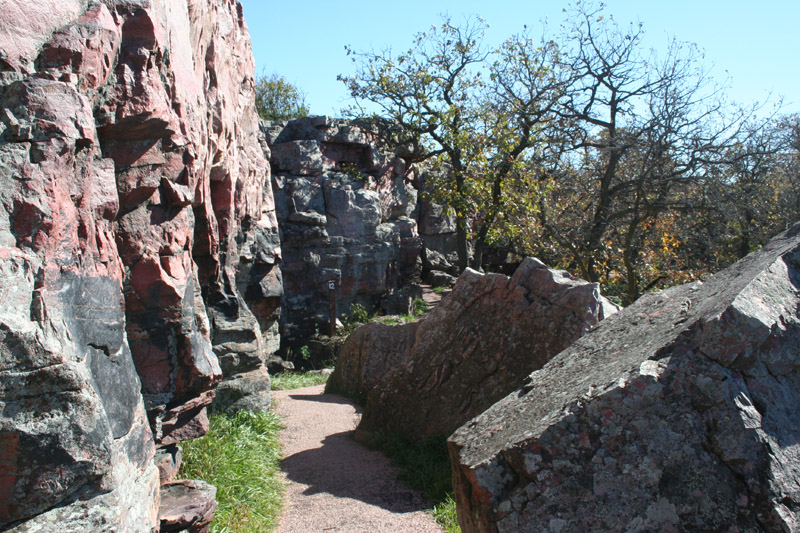 |
Cliffs and tumbled
boulders line the eastern edge of the
monument. The quartzite of which they are
made is far too hard to have been used for
pipes. though it resembles Pipestone in
color, the actual prized Pipestone is about
as soft as a human fingernail. This made it
possible to work, with the stone tools, and
simple techniques possessed by the early
tribes. In addition to being soft enough to
work, Pipestone would not rot, and did not
burn, so it would add nothing to the flavor
of the tobacco. |
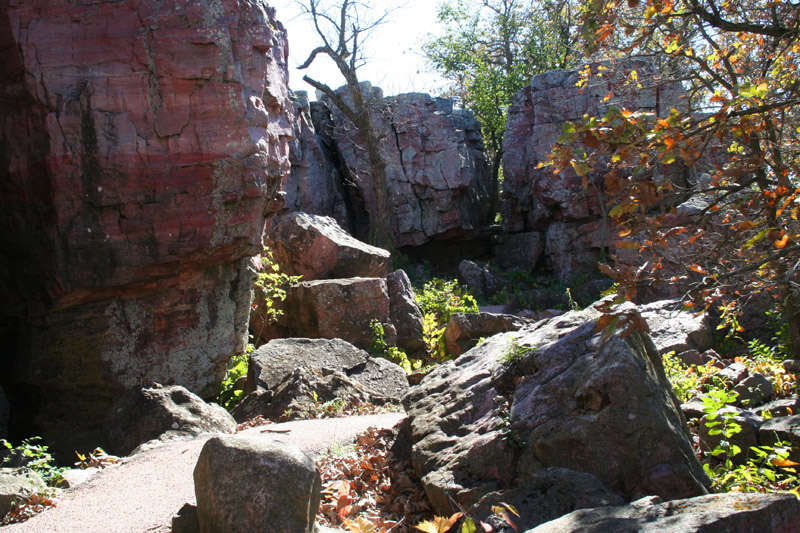 |
A last area of rock
outcrops. Even though this is not Pipestone,
rock hounds are not welcome. This is a
national monument, so nothing may be
removed. The Indians have a special permit,
in recognition of centuries of tradition,
which allows them to quarry for Pipestone. |